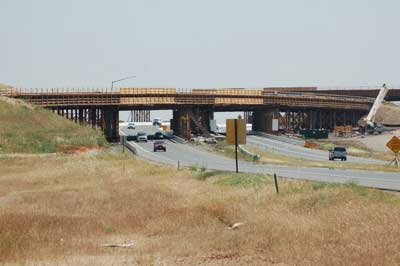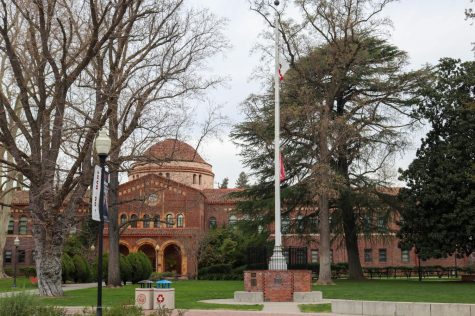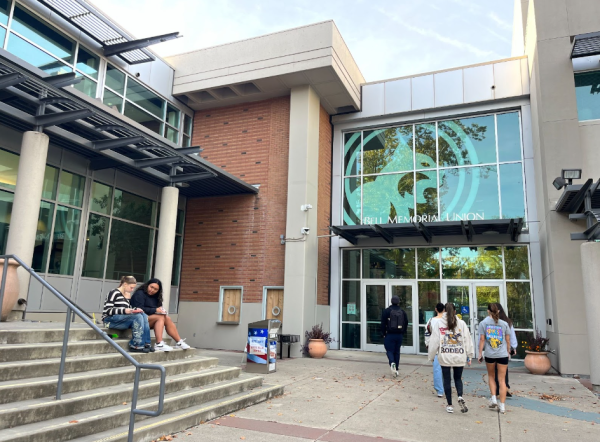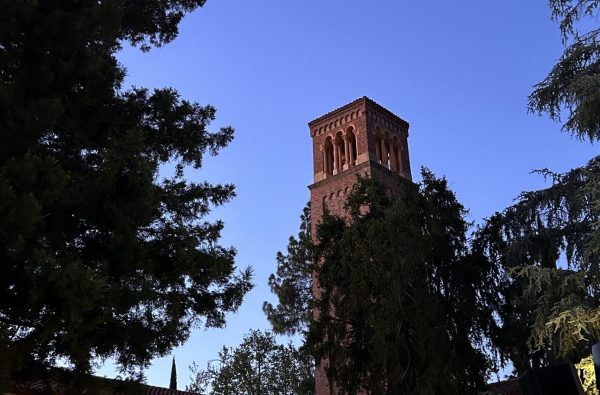County proposes plan to speed up construction development

The Highway 149 Widening and Interchange while under construction over a decade ago. (Photo courtesy of Jon Clark).
A new plan aims to make development quicker and less expensive in Butte County, while simultaneously protecting the environment.
The proposed Butte Regional Conservation Plan would give local cities and the county the power to issue building permits for things like new shopping centers or widening a highway. Another goal of the plan is to protect endangered plant and animal species in Butte County that will be impacted by future building.
One example is the Butte County Meadowfoam, an endangered annual flower that only grows in Butte County. The plan will protect areas where a lot of the plants grow, but also allow areas with a low number of plants to be developed.
“It’s a small springtime flowering plant,” Clark said. “We’re gonna be protecting a lot of that plant’s habitat to hopefully move it toward recovery, which means ultimately not having it listed as endangered anymore.”
Over the next 50 years, the cities of Chico, Oroville, Gridley and Biggs plan to expand about 25,000 acres in total. The proposal would allow each city to expand if it’s in their city plan, and would gradually preserve 90,000 acres of land in Butte County.
If passed, the proposal would bring local control to the development process.
As of now, developers have to get permission to build from several regulatory agencies in Sacramento, which can take years, according to Jon Clark, executive director of the Butte County Association of Governments.
The county started working on the proposal eight years ago after the Highway 149 Widening and Interchange project hit legal delays from environmental groups, according to Clark. The highway’s at-grade intersections with both Highway 99 and Highway 70 were accident prone areas, he added.
“When it was said and done it ended up delaying that project for like 10 years,” Clark said. “During that time we had another 11 fatalities at those intersections and about 150 additional accidents. The cost went from $53 million to $128 million.”
Before ground is even broken, the developer has to determine the environmental impact of construction. They then have to get permission from several regulatory agencies in Sacramento, such as the Army Corps of Engineers or the California Department of Fish and Wildlife.
The agencies could then make the developer buy land to preserve in order to offset the construction, which is called mitigation.
“It’s a very time-consuming process,” Clark said. “So you have to go find land, survey that land, you have to negotiate to buy that land. The process can take years.”
He added that currently it takes a couple years on average to get an incidental take permit, which is permission to break ground on a construction project. It can take as long as five years to get the permit for a large-scale project.
“Under our plan, you’re probably looking at less than six months,” said Chris Devine, planning manager for the Butte County Association of Governments.
With the proposed plan, developers will no longer have to go to Sacramento to get permission to build. With the new process, they can go to the city or county planning department, do an environmental impact report, then come back and pay a fee for the land.
“All you have to do is walk up to the counter, tell us what your impacts are, write a check and we can move you along,” Clark said. “The area where you save all the time and effort is that you don’t have to meet and negotiate with regulatory agencies in Sacramento.”
As of now, builders don’t know the cost until their project is done because it’s uncertain how long it’ll take to get a building permit. What would change is that the cost of developing will immediately be known. That’s because the county has already done the environmental impact reports for the land the cities want to expand to.
Under the new proposal, developers wouldn’t have to buy land to offset construction either. Instead, the Butte County Association of Governments would step in and buy the land to preserve.
Some developers are waiting for this plan to come to fruition to start, Clark said. Cal Trans is waiting to widen Highway 191 between Paradise and Butte College. They plan on widening the road and making the turns less sharp.
If they started now, they’d have to find landowners willing to preserve 57 acres, because the project would impact 57 acres of oak woodland. If they wait, then the county will find that land for them.
”Under our plan they would just pay a fee,” Clark said.
That land will be acquired through conservation easements, Clark added. With a conservation easement, the county pays landowners to sign a legal document saying they will never develop the land. The habitat also has to remain intact, and it will be the county’s responsibility to maintain it.
Clark said that most landowners are willing to do this because they will still own their land, they’re just getting paid to not develop it.
“It’s an opportunity for them,” he said. “They’re probably gonna keep that land as it is now anyway.”
For example, the plan calls to conserve 500 acres of Giant Garter Snake habitat. The snake lives in rice fields. So in this case, the county will be paying the farmer to keep the land as rice fields.
When acquiring conservation land, the county will be adding to existing preserves. This way, there will be larger areas instead of a couple acres here and there. According to Devine, having larger, unified reserves will help the 38 endangered plant and animal species in Butte County.
According to Devine, future development will impact all 38 endangered species, and the plan identified how much land needs to be set aside for the endangered plants and animals to offset development.
Chico residents can voice their opinion about the proposal at an open forum on Jan. 25 6-8 p.m at the Chico Masonic Family Center.
”It brings local control to this process,” he said. “It shifts it from Sacramento, puts it down into the local planning departments, allows it to be managed and have oversight by local elected officials.”
Austin Herbaugh can be reached at [email protected] or @aherbaugh14 on Twitter.








